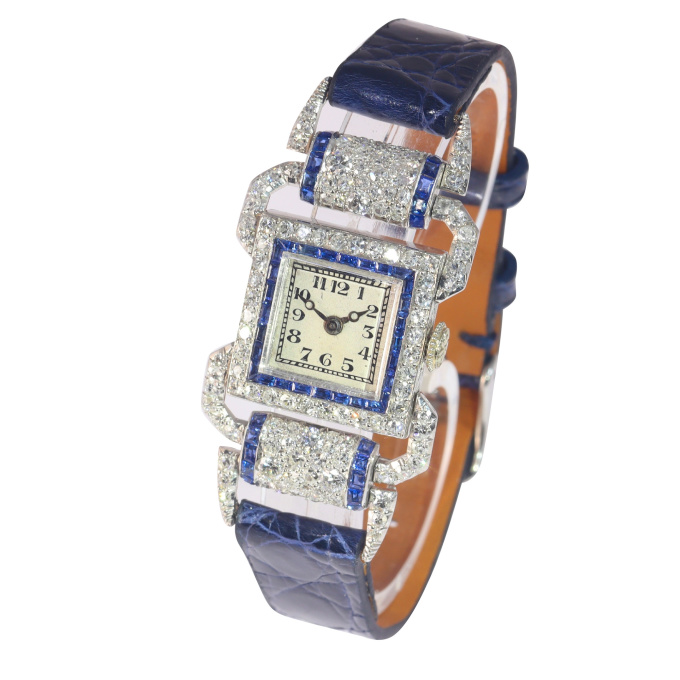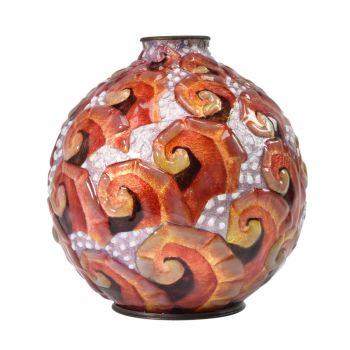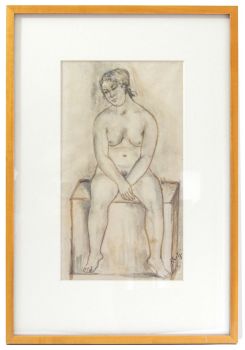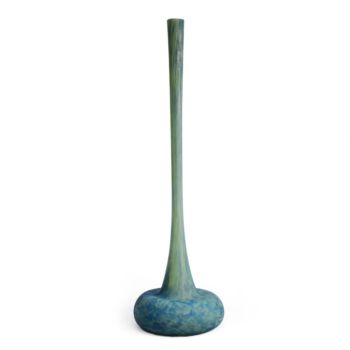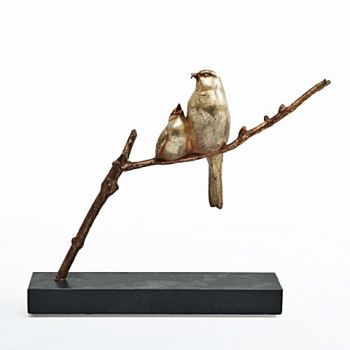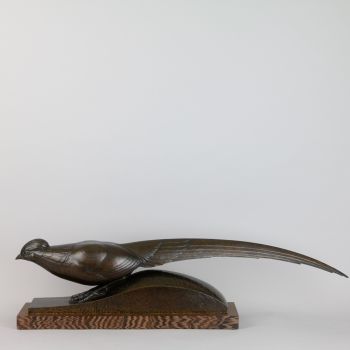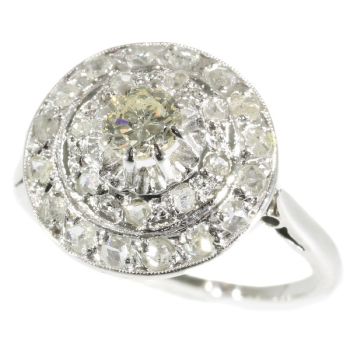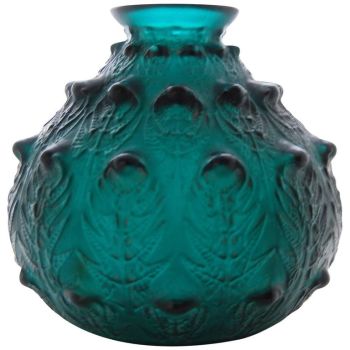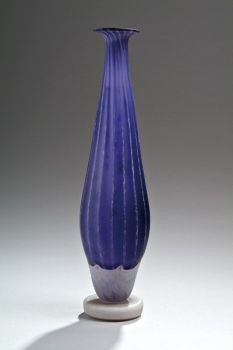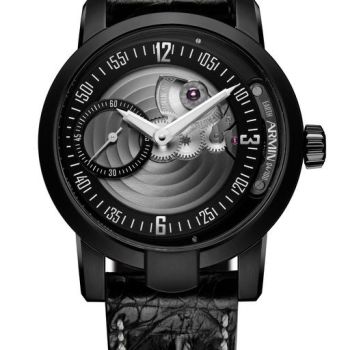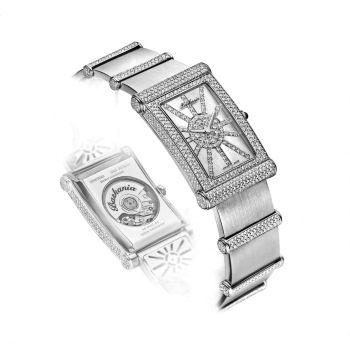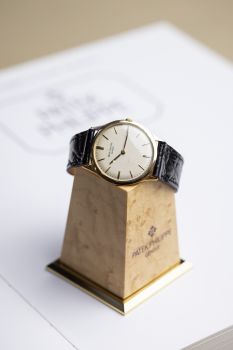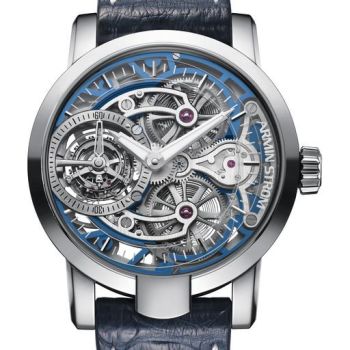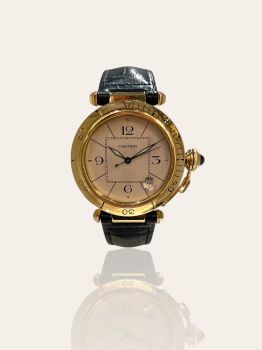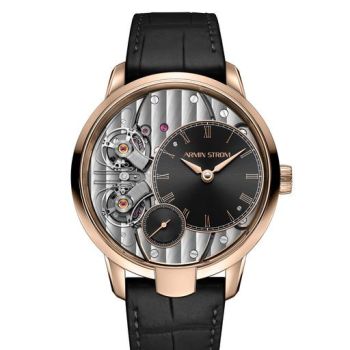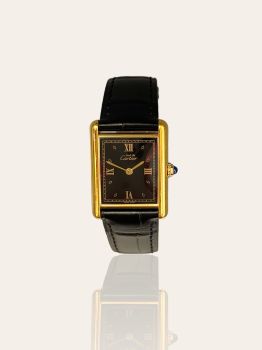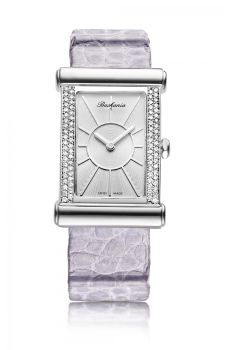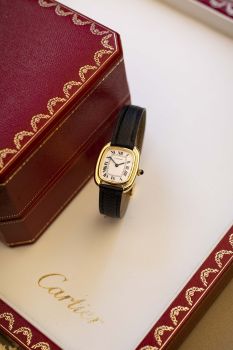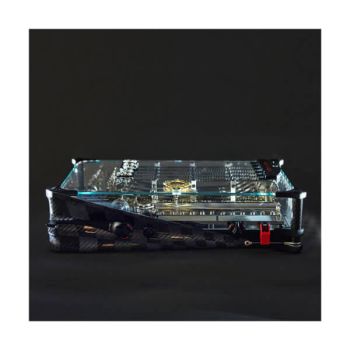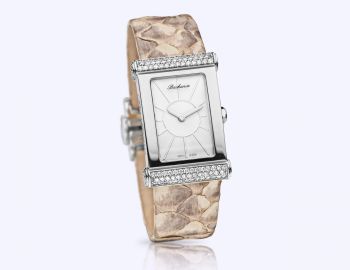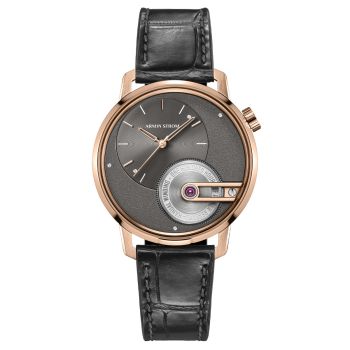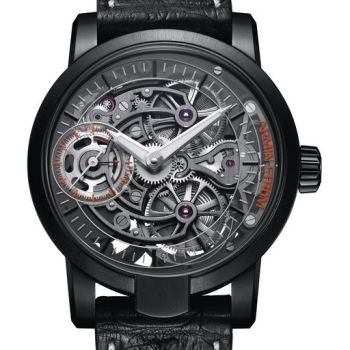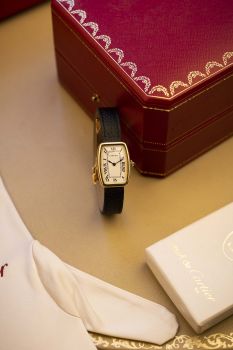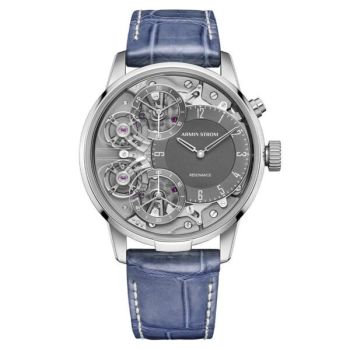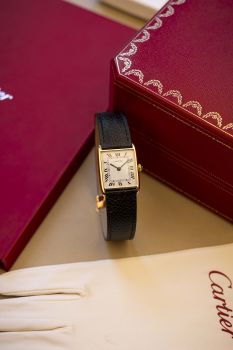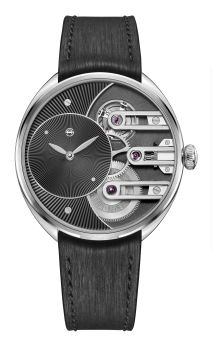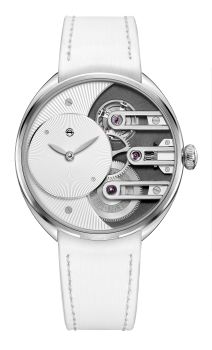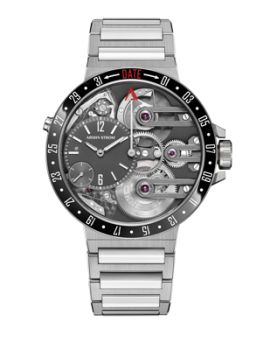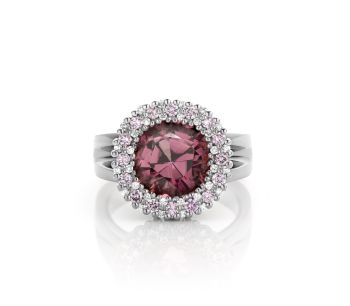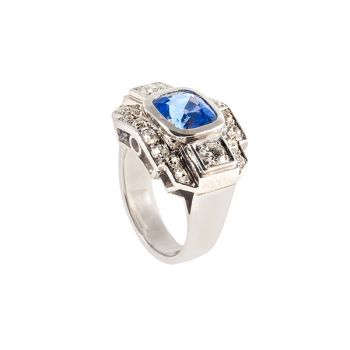Vintage Art Deco platinum ladies wrist watch made by Leon Hatot set with diamonds and sapphires 1920
Leon Hatot
DiamondSapphireGemstonePlatinum
Currently unavailable via Gallerease
- About the artwork
Antique jewelry object group
ladies wrist watch
Condition
very good condition
more info on our condition scale
Country of origin
France
Style
Art Deco - Art Deco is an eclectic artistic and design style which had its origins in Paris in the first decades of the 20th century. The style originated in the 1920s and continued to be employed until after World War II. The term "art deco" first sawwide use after an exhibition in 1966, referring to the 1925 Exposition Internationale des Arts Décoratifs et Industriels Modernes that was the culmination of high-end style modern in Paris. Led by the best designers in the decorative arts such asfashion, and interior design, Art Deco affected all areas of design throughout the 1920s and 1930s, including architecture and industrial design, as well as the visual arts such as painting, the graphic arts and film. At the time, this style was seen aselegant, glamorous, functional and modern.
See also: Art Deco
more info on styles
Style specifics
Abstract motives and geometrical forms are quite typical for the Art Deco period. Art Deco moved away from the soft pastels and organic forms of its style predecessor, Art Nouveau, and embraced influences from many different styles and movements of the early 20th century, including Neoclassical, Constructivism, Cubism, Modernism,and Futurism. Its popularity peaked in Europe during the Roaring Twenties and continued strongly in the United States through the 1930s. Although many design movements have political or philosophical roots or intentions, Art Deco was purelydecorative.
Period
ca. 1920
Events & facts of this era, poetry of this era, fashion of this era.
Material
platinum (touchstone tested)
more info on precious metals
Extra information
Leon Hatot (1883-1953) Started in 1911, bought the atelier of Brédillard in Paris and was supplier to the important jewellery houses in quartier Vendôme and of René-Boivin.
Diamonds
Six old brilliant cut with an estimated weight of ± 0.48ct
112 single brilliant cut diamonds (also called 8/8)with an estimated weight of ± 2.00ct
Total diamond count
118 pcs.
Total diamond weight
approx. 2.48 crt with an average colour and clarity F/J, vs/i
All diamond weights, color grades and clarity are approximate since stones are not removed from their mounts to preserve the integrity of the setting.
All diamonds we offer are screened by the I.J.G.C. for whether they are natural or synthetic, and all diamonds in this jewel are 100% guaranteed to be natural.
Precious stones
48 sapphires
It is a very common practice to treat gemstones to intensify their clarity or colour. The item in question has not been tested in this regard.
Birthstones
Diamond is the birthstone (or month stone) for April and sapphire for September.
more info on birthstones
Hallmarks
Mastermark LH for Leon Hatot and the French control mark for platinum representing a dog's head that was in use in France from about 1912.
more info on hallmarks
Dimensions
width case 2,30 cm (0,91 inch)
see picture with a ruler in millimeters and inches
Weight
22,00 gram (14,15 dwt)
- About the artist
Léon Hatot (1883 – 1953) was a passionate entrepreneur: inventive, innovative and above all progressive. A child of his time actually, who was fascinated by the application of the latest materials and techniques.
Entrepreneur and goldsmith Léon Hatot visited the École d' Horlogerie in Besançon from 1895 to 1898 and then the École des Beaux Arts, also in Besançon. At a very young age, he settled in Besançon in 1905 as an independent entrepreneur and specialized in engraving timepiece cases.
He soon established a workshop for clockmakers and jewelers in Paris as well. Here, assisted by a large number of craftsmen, he manufactured high-quality clocks, using special precious metals. At that time, Hatot was one of the few to manufacture watches as well as jewelry. He supplied them to the most important trading houses in Rue de la Paix in Paris.
Curious and with an eye to the future, Hatot soon becomes interested in the application of electricity in timepieces. In 1920, this resulted in the establishment of a department to research and develop battery-powered timepieces. Since 1923, Hatot electric clocks have been sold under the ATO brand name from the Paris and Besançon sites.
From the moment these timepieces appeared on the market, they were a resounding success. During the 'Exposition international des arts décoratifs', Hatot was awarded a 'Grand Prix' for its entire program of electric clocks. Characteristic of his models was that they were housed in marble, chrome-plated metal, refined woods or processed glass cases from the famous Lalique factories.
Because of the decorative design of these timepieces, Hatot is able to establish a name in the clock world as 'master of the Art Déco period'. His contribution to the scientific world is also great. Thanks to his creative and visionary spirit and his numerous inventions, Hatot managed to bring developments in the field of clocks to a higher level up to and including the second quarter of the twentieth century. France rewarded him for this with the highest national award, the 'Légion d'Honneur'.
In 1931, at the Colonial Exhibition in Paris, Léon Hatot presented a series of compact electric clocks that marked the beginning of a new generation of decorative timepieces. He completely broke with the current tradition in which the cases served as decoration and made the timepiece itself the eye-catcher. In this way, Hatot became a trendsetter for a new fashionable trend.
Artwork details
Related artworks
René Lalique
A very rare deep green ‘Fougeres’ Vase designed by R. Lalique1912
€ 8.950Lennart Booij Fine Art and Rare Items
 Curated by
Curated bySilla Scheepens
1 - 4 / 24Armin Strom
Armin Strom "Mirrored Force Resonance First Edition"2022 - 2023
Price on requestHa-Juweliers
1 - 4 / 24Unknown artist
Retro ring in platinum set with diamonds and a sapphire1940 - 1950
Price on requestLyppens Juweliers
1 - 4 / 24

